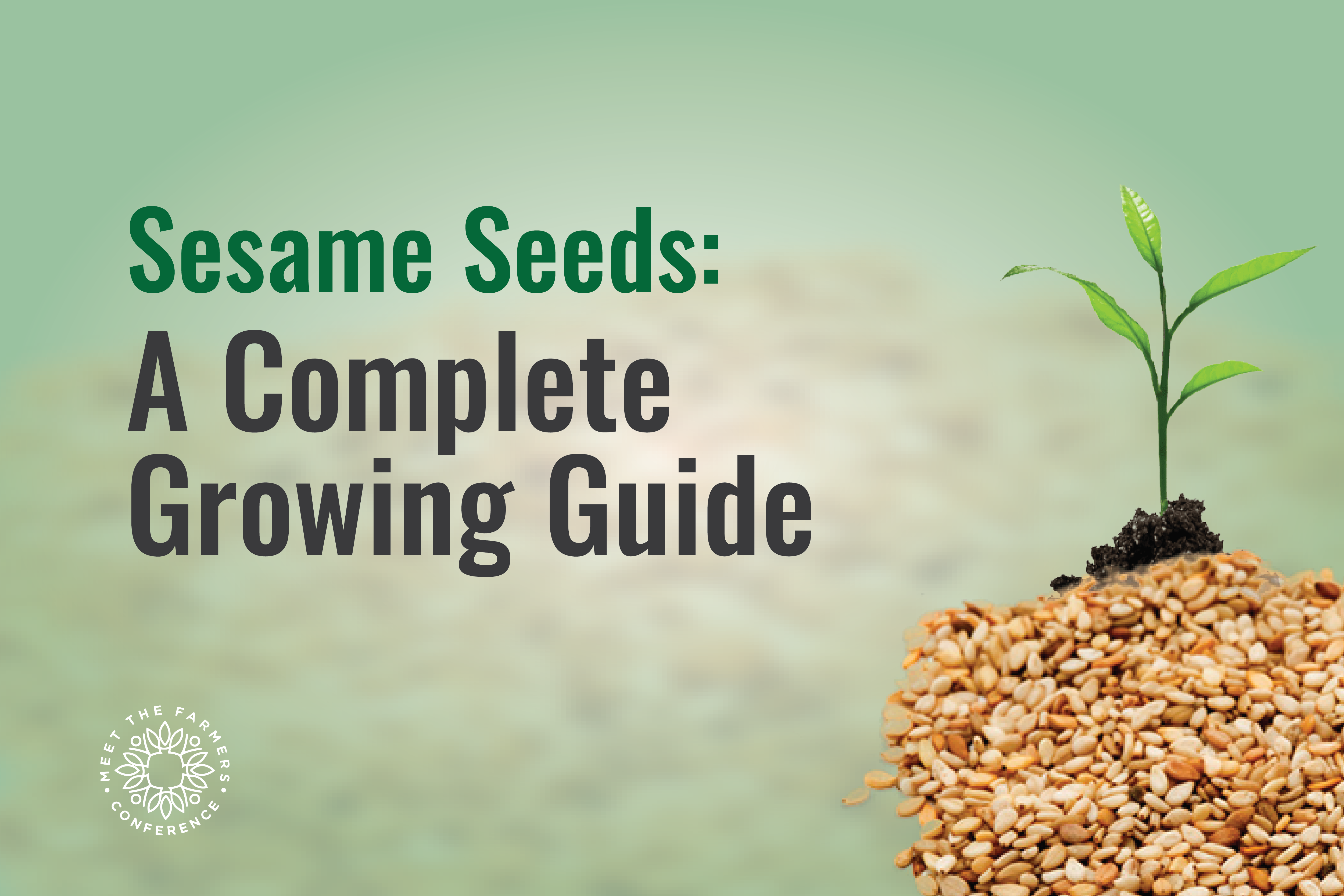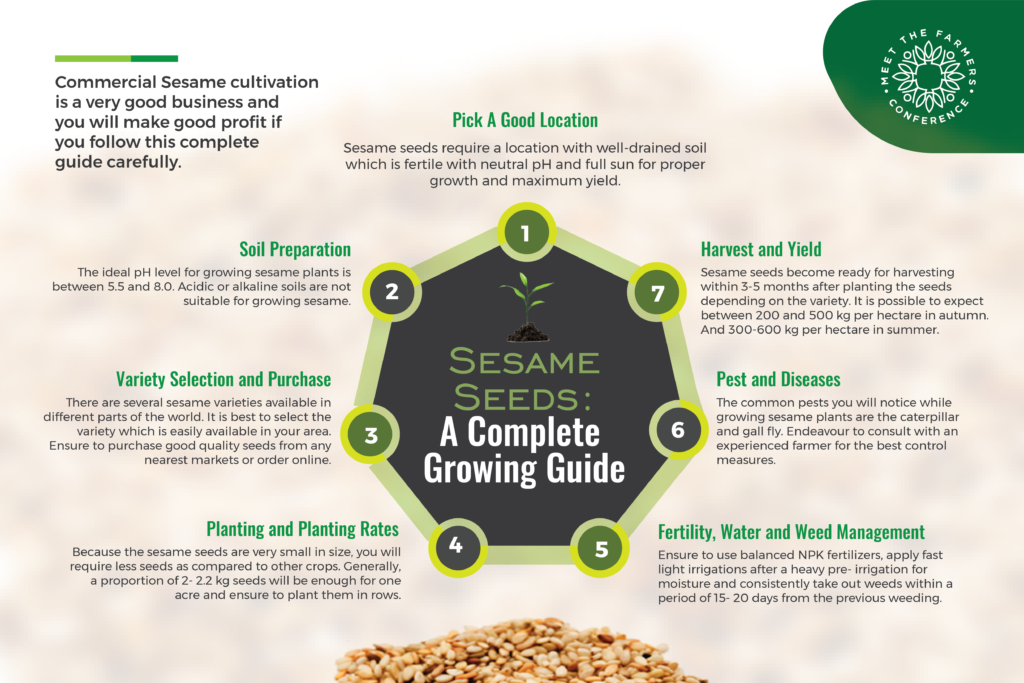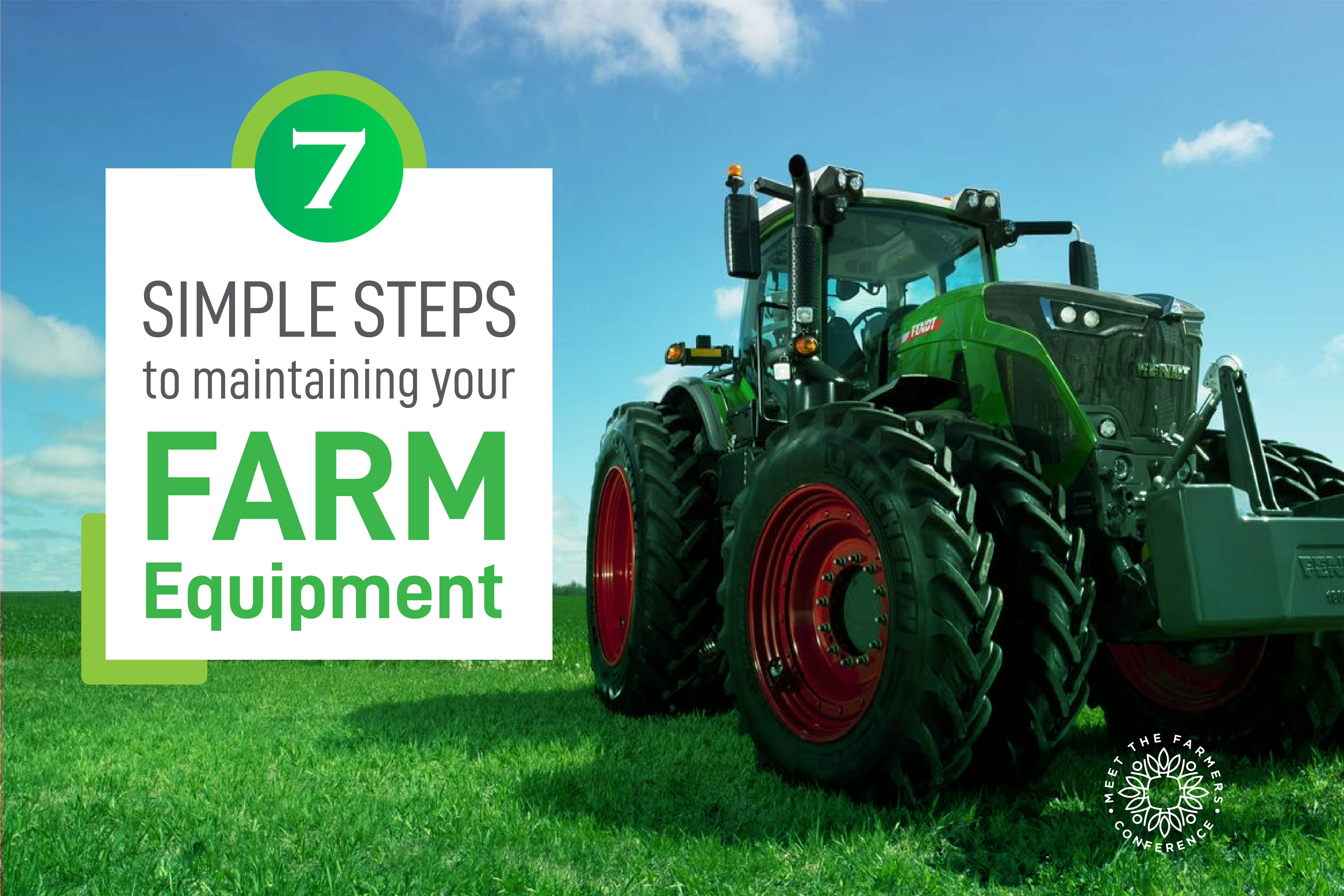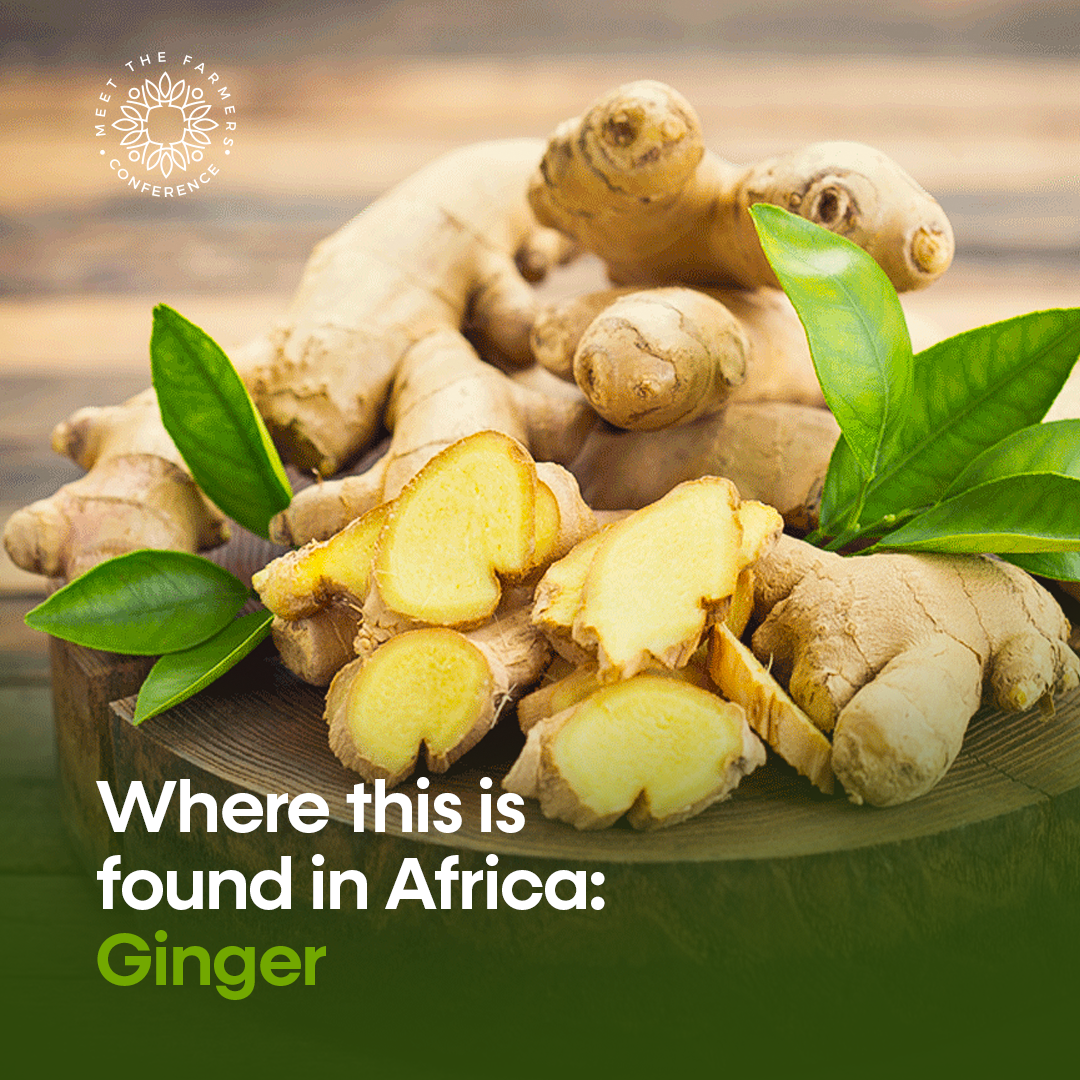Sesame Seeds: A Complete Growing Guide

Sesame seed is a crop obtained from a very beautiful plant with attractive dark-green leaves and have tubular flowers that can be of white or pale pink colour. The Sesame plant is part of the Pedaliaceae family and the species usually grown is known as Sesamum indicum. It is a tropical annual herb growing 50 to 100cm tall, with leaves 4- 14cm long which radiates out from a stem that is square in cross section.
Sesame seed is one of the oldest oilseed crops known, cultivated well over 3000 years ago. Aside from its high oil content which has a rich and nutty flavour, the seeds are also suitable for various bakery products and other goods of the food industry.
The largest sesame areas are grown in India, China, Myanmar, Ethiopia, Nigeria, Tanzania and Sudan. However, the most productive sesame farms are located in Greece, where largest productions per hectare were recorded in 2013.
On the other hand, the largest sesame seeds importing countries are Japan, China, Turkey, South Korea, Israel and the UAE.
Commercial sesame crops require 90 to 120 frost free days. Warm conditions above 23 °C (73 °F) favour growth and yields. While sesame seeds can grow in poor soils, the best yields come from properly fertilized farms.
Sesame is drought-tolerant, in part due to its extensive root system. However, it requires adequate moisture for germination and early growth. While the crop survives drought and presence of excess water, the yields are significantly lower in either condition. Moisture levels before planting and flowering impact yield most.
Commercial sesame cultivation is a very good business and you will make good profit if you follow this complete guide carefully:
See also: 7 Simple Tips to Maintain Your Farm Equipment
Pick a good location
First of all, ensure to pick a good location. This is very important as sesame seeds generally grow very well in well-drained soil which is fertile with neutral pH. They tend to do very well in dry conditions, but cannot tolerate water-logged conditions. And the seeds require full sun for proper growth and maximum yield. These are all the factors while selecting location for growing sesame seeds.
Soil Preparation
The ideal pH level for growing sesame plants is between 5.5 and 8.0. Acidic or alkaline soils are not suitable for growing sesame.
For preparing the soil, 1-2 ploughing will be required with 2-3 cross harrowing. Apply all the fertilizers during this time. For commercial production, add 10-12 kg urea and 40-50 kg superphosphate per acre. And apply MOP if the soil is deficient.
Variety Selection and Purchase
There are several sesame varieties available in different parts of the world. It is best to select the variety which is easily available in your area. Some improved or hybrid sesame varieties are SVPR-1, VRI-1, VRI-2, CO-1, TMV-3, TMV-4, TMV-5, TMV-6 and TMV-7. Ensure to consult with an existing farmer or an agriculture specialist in your area who has a good recommendation for selecting good variety.
After you have made your selection, purchase good quality seeds from any of your nearest markets. You can also consider ordering the seeds online.
Planting and Planting Rates
Because the sesame seeds are very small in size, you will require less seeds as compared to many other crops. Generally, a proportion of 2- 2.2 kg seeds will be enough for one acre.
It is a very good option to plant seeds in rows instead of scattering them throughout the land. Ensure the rows are spaced to about 10-12 inches apart. Mix the seed with dry sand and spread the mixture along the furrows to ensure even distribution. Sow the seeds to about 1/2 to 2/3 inch deep. Cover the seeds with soil after sowing, and water the soil lightly.
Before sowing the seeds, you will need to treat them with Bavistin at the rate of 2 grams per kg seed. This will prevent the seeds from brone diseases. You can thin the seedlings to about 4-6 inches apart when they are about or up to 4 inches tall.

Fertility, Water and Weed Management
In most cases, additional fertilizers for growing sesame plants is not necessary. If you have prepared the soil by following the guides mentioned above, your crops will grow just fine. But if there is a need, stick to balanced NPK fertilizers.
Sesame seeds use less water compared to other oily seeds but will give higher yields with more moisture. The best water the sesame seeds will ever get after planting is that of a heavy pre- irrigation. Once the seeds germinate, fast light irrigations would be preferable. Too much water kills sesame seeds.
Managing weeds is very important as they consume most of the nutrients from the soil. The first step for controlling weeds should be taken while preparing the soil. Then additional weeding is required 15-25 days after sowing the seeds. And finally, another one at 15 to 20 days after first weeding.
Pest and Diseases
These are generally less in sesame plants especially in the growing area with present varieties. However, caterpillar and gall fly are the common pests you will notice while growing sesame plants. Endeavour to consult with an experienced farmer or your nearest agriculture extension office for more help for controlling all these pests and diseases.
Harvest and Yield
Sesame seeds become ready for harvesting within 3-5 months after planting the seeds depending on the variety. But in most varieties, you can expect to harvest when the leaves, stems and capsules begin to turn yellow and the lower leaves of the plant start shedding.
It is not advisable to wait until the crop becomes dead ripe as this will cause the seeds to shed. The ripe sesame plants should be cut at the ground level and should be stacked for 7 to 10 days in sun to get them ready for the threshing process.
Total yield always depends on the variety selected, and also on good farm management practice. It is possible to expect between 200 and 500 kg per hectare in autumn. And 300-600 kg per hectare in summer.
Written By: Nene Nseabasi








Joshua Ojonimi Joshua
Very insightful